#indo caribbean heritage
Explore tagged Tumblr posts
Text
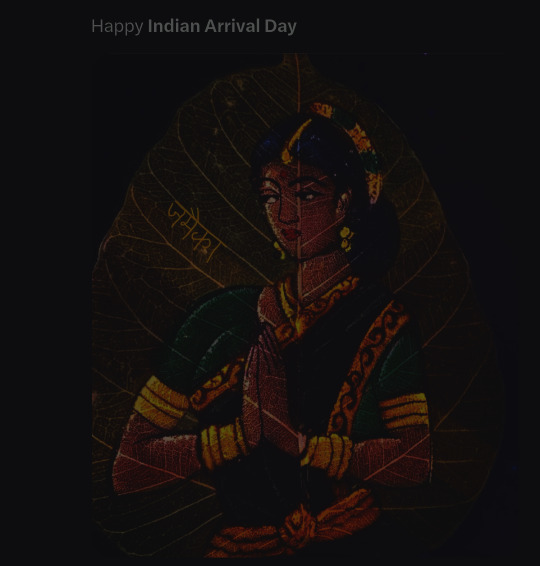
#indo caribbean heritage#indian arrival day#indian survival day#indian diaspora#indo caribbean takes#indian arrival month#grenada#may 1#guyana#may 5#martinique#may 6#st lucia#jamaica#may 10#fiji#may 14#trinidad & tobago#may 30#svg#june 1#suriname#june 5#mauritius#nov 2#south africa#nov 16#guadeloupe#dec 24
0 notes
Text
naming ocs is such a struggle in general but its especially a struggle when you want to name ur ocs realistic stuff thats of non white and/or non english speaking origin because like if ur a foolish monolingual english speaker like myself u gotta constantly outrun the churned out baby naming website listicles of non-english names listed with meanings they either garbled through a game of telephone at best or just straight made up at worst while trying to find any research source u can read thats half decent. fighting for my life out here
AND LIKE its not like i can ask any friends and acquaintances about this stuff like HOW do i ask some work buddy like hey. what culturally thoughtful name should i give my funny little cartoon guy. thank you and goodnight I CANT i cant do it orz
of course i dont mind a weird made-up name on occasion, but like. and this might be more important to me in particular as i am some kinda vaguely ambiguous mixed race person with very noticeably "ethnic" name for the north american country i live in who also has like 389423053742 vaguely ambiguous mixed race ocs but. you know. i love my oc Sci. and I love that his name is Sci short for Science Fiction. and I love that he's a second generation iranian canadian named Sci pronounced Sai short for Science Fiction. but a real human name would be nice sometimes too LOL
#lia and her friends names are all wack. on purpose but yeah#i think i mentioned before that their names were like shortened versions of placeholder names that just stuck#except rosie. he's just always been rosie HJKFDLSJFDS#but yeah i like those guys and their slightly wack names. well not all of them are wack#lia's just a slightly uncommon but not that uncommon alternate spelling of a very common name#bibi is technically a normal name in some cultures. but maybe not that normal on a young man of eastern european and indo caribbean descent#but maybe it IS normal on a young man of eastern european and indo caribbean descent. if you believe. in the power of friendship#eri and tora are also just like normal names in a few different cultures#em is a pretty common nickname for a lot of names like emily and emile and shit. and when i think about it a guy with indocaribbean heritag#having the name Emile would be pretty common where i live at least. but his name isnt emile. its just em JKLFDSJFDsd#theres no way i can rationalize Fell's name i dont think. she sounds like an AU fan character of some game. but thats okay i love her anywa#also yeah like 70% of the Lia Crystal Darling cast has some kinda indian caribbean heritage because i am. also of that LOL
12 notes
·
View notes
Text
#beyonce#neal farinah#diaspora#mixed heritage#dougla#afro indo heritage#african heritage#indian heritage#trinidad and tobago#arima#afro asian#afro caribbean#indo caribbean#stylist#iconic looks#black is king
1 note
·
View note
Text
Themes in Contemporary Caribbean Art
This blog is mainly focused on art before the 1980s but if you're interested in exploring themes in contemporary Caribbean art this article by Tatiana Flores (available in English and Spanish) looking at the theme of water is a great place to start.
This idea of water as something so essential for all life and the interconnectivity it represents of both living and non-living things (like water itself) is exemplified here by the hydrocommons, a term that looks to connect environmental movements with historical inequalities and the reclaiming of ancestral memory among other things; exploring how the arts can help us reimagine newer, more sustainable relationships with ourselves, other living beings and our natural environment (with a strong interest in performance, as a historically undervalued art form).
You do have to subscribe to their newsletter in order to access this article, a great resource if you're interested in larger contemporary trends across Latin America and the Caribbean. But rest assured, you can always unsubscribe if it's not what you're looking for.
(See also: Key Themes in Caribbean Art)
#might sound a little coocoo at first but that's bc academics and artists sound a little crazy sometimes#i've hated writing these posts but think i'm getting better at it#caribbean american heritage month#latin american and caribbean studies#read caribbean#performance art#black diaspora#black studies#african diaspora#indian diaspora#indo caribbean#contemporary art#caribbean literature#caribbean art#latin american art#caribbean studies#latin american studies#themes#derek walcott#édouard glissant#edouard glissant#maria magdalena campos pons#maría magdalena campos pons#trinidad and tobago#cuba#cúba#saint lucia#hydrocommons#ancestral memory
18 notes
·
View notes
Text
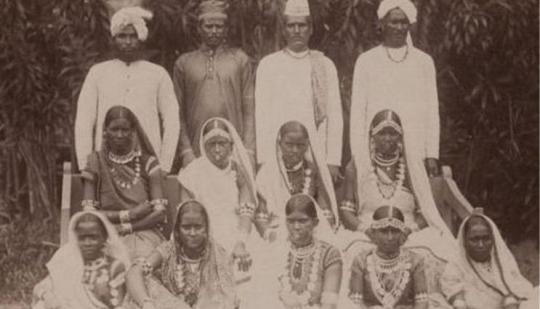
Indian immigrants to Guyana in the 1800’s
To be precise, I am an Indo-Guyanese-American: The mother of all hyphenated identities and an illustration of a historic journey from India to the Caribbean. This heritage is commonly packaged in a number of different terms, all of which are heavily used as referential identifiers: Indo-Guyanese. Indo-Caribbean. Caribbean. West Indian. Indian. It is most aptly described as the Indo-Caribbean experience—an experience that is shared by Indians living throughout the Caribbean diaspora and thus serving as the blueprint for my existence.
This unique cultural disposition is why the Indo-Caribbean are able to culturally identify with public figures ranging from Hasan Minhaj to Nicki Minaj. It is why bursts of Caribbean intonation in Rihanna’s voice blanket me in the comfort of home, while the ballads of A.R. Rahman awaken pained demons within me, crying to connect with a history that was ripped from my hands long before I was born.
My parents hail from Guyana, a small country on the northern coast of South America. Guyana is one of the original colonies of the British West Indies and, although not located in the Caribbean Sea, the CARICOM Seat of Secretariat is located in Georgetown, Guyana, thus rendering the country a crucial member of the Caribbean family. [Read more]
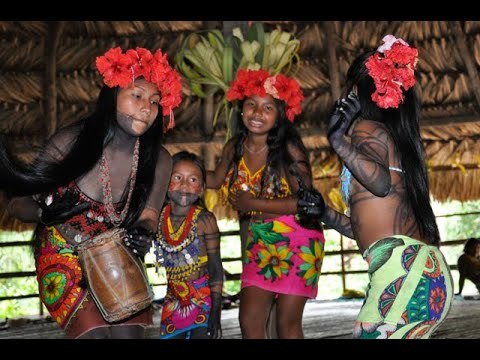
63 notes
·
View notes
Text
For those curious, "First Nations" is the term typically used to denote people "native to the Americas," here in Canada (which sometimes but doesn't always include Metis and Inuit people, who are different enough to often be addressed separately.)
I understand and respect why "Indian" is still a commonly used term in the USA, but that term isn't really as practical here. There are a LOT of Indians here. . . As in, people from India/people with Indian heritage. My own family is part indo-guyanese and I remember at four or five years old being very confused as my mother tried to explain to me First Nations people weren't also from India/the Caribbean. There are some organizations and stuff that still use that term, some First Nations people who will call themselves Indian as a cute little nickname in a non-formal context, but it's very rapidly fallen out of cultural parlance here-- "Indian" to mean "native." As a person who is NOT First Nations, I will say personally I'm so used to Indian meaning Indian from India when I hear a First Nations person refer to themselves as Indian it takes my brain a second to compute what they mean.
No one but known Ameriboo Lily Orchard in Canada calls themselves a "Native American." It's got the same cringe factor as someone calling a Canadian black immigrant from France an "African Anerican." Yes Canada is part of the Americas, but we are not American. Same way Mexico is part of the Americas, but are not American. Don't see anyone calling them "native American."
If I may add, as someone who admittedly has no right to have an opinion on the matter, I do personally appreciate that the term gives at least some respect to the fact that they are NATIONS (plural), not a single identity. I think America would do well to adopt the term "First Nations" as a formal way of referring to First Nations people, but-- again. Not my place here to really drive that point home.
#lily orchard#lily orchard critical#anti lily orchard#lily peet#lily orchard stuff#lorch posting#youtube#liquid orcard#eldritch lily#first nations#native american#indian
17 notes
·
View notes
Text
hello, @battleslippers brought up a pretty good point when it comes to desi!johnny cade, because what the fuck is he doing in oklahoma in the 1960’s anyway!
so now, i’m going to present possible reasons on why/how he even wound up here
a) immigrant johnny 🍅👎🏾🤬😤
is my least favorite, bcs it makes no sense for his character at all.
johnny immigrated with his family in 1965, and he was born and mostly raised in south asia
this one could be possible because there are recorded indian immigrants from this time (my sources are my family members)
i don’t like this one whatsoever because south asian lifestyles + culture are completely different, and his personality wouldn’t be anything alike to johnnys real one in the book/movie
b) east-india company 🥉
in the 1700’s, the east-india company brought indian servants to the colonies and they were recorded to be enslaved in mostly maryland and delaware. once slavery was abolished, they blended in with african-americans and were deemed as mulattoes. if this was the case, he could’ve wound up in oklahoma one way or another, so its defo not unrealistic
i can see this one being highly likely, but it was most likely mean johnny is of mixed descent (either mixed with african-american, latino, or native heritage) but i hc johnny to be mostly south asian, so think twice ab this one
c) indo-caribbean 🥈
between the years of 1838-1917 around 500k people living in colonial india were taken to the 13 colonies and the caribbean to be indentured slaves to farm sugar cane. this one could work because once these people were freed, johnnys parents/grandparents could’ve come to oklahoma and thats why hes there
this one im 50/50 about bcs it could also make johnny mixed and i dont really see it + the culture of indo-carribean people vs south asia is a little different
d) sikh migration 🏆 ⭐️🎖
in the late 1800’s and early 1900’s, many sikh immigrants came to california. these people specifically came because of food shortages and drought issues. these people typically worked on railroads. as these migrants came to the us, they experienced a lot of discrimination and racism (ex/ bellingham riots) so its possible his family moved to oklahoma to escape it then had johnny
there was a bunch of more complicated history with this, but that history doesnt change the fact this explanation is possible
this ones personally my favorite, because it means johnny could be mostly south asian, he could be sikh, and he would most likely be punjabi which is exactly how i see him
(hope y’all appreciate this i spent like 30 min researching and writing this lmaoo)
(usual desi johnny tags @pumpkinsy0 @coquettejohnny btw if yall want me to stop tagging, just send a dm! i dont mind at all)
#the outsiders#theoutsiders#outsiders headcanons#desi johnny cade#johnny cade headcanons#the outsiders johnny#johnnycade#j. cade#johnny cade
27 notes
·
View notes
Text


I promise you: SE Asian tribes (via Indo-Asian region) are as hopelessly dispersed across the globe as African tribes. Their lands, their people are not a monolith as their diverse culture reflect brutal conquests by multiple invading, raping, pillaging armies from the EMEA
Thus, enslaved Asians in Caribbean, South Africa, etc?, get no love in their ancestral homeland. Jamaican #Coolies could write their own book about #tether emigre from India, carpet-bagging from Kingston to St Anns!
It’s humiliating, but this is what it means to be Black in the Americas. We (BLKs) have been scattered to the four winds, our cultures and identities fragmented by more than five centuries of slavery, colonialism, and oppression.
Kamala Harris is a case in point; Her Jamaican roots are a testament to the forced migration of Africans across the Atlantic. But her Indian heritage also speaks to the complex web of migration and intermarriage that has shaped the Black experience in the Caribbean.


Like many Black people (a term created to describe 'non-whites' in the Americas, actually!) Harris is a product of both the horrors and the resilience of our history. She is a symbol of the challenges and opportunities that we face as we navigate a world that is still shaped by the legacy of brutal ethnic cleansing of dark people in the new world.
Read More Re: Coolie people worldwide?
6 notes
·
View notes
Text
As a Trini who’s mixed with literally every ethnic group on the island (aside from Syrian and Lebanese) but who looks East Indian, this!!! When I was studying in the UK I had to explain to people soooo many times how I could look Indian but be from the Caribbean. I remember this one time I was talking to a Punjabi guy at a Diwali function, and he was adamant that I “didn’t look Trinidadian.” The conversation went as follows:
Him: Are you Indian?
Me: No, I’m Trinidadian! But I’m part Indian because we’re a very diverse country and we have a lot of South Asians there.
Him: But you do not look Trinidadian.
Me: Yeah, well, it’s a long story but- the British brought Indians to Trinidad when India was still ruled by Britain, to replace the former enslaved Africans. That’s why.
Him: You don’t look Trinidadian.
Me: Again, we’re a very diverse country because of our history!
Him: You don’t look Trinidadian.
I’m serious, he literally just repeated “You don’t look Trinidadian” with a confused look until we parted ways. Wild.
And then there’s the times when I had my own “Caribbeanness” contested by Brits who claim West Indian heritage because their grandfather was born there but left to move to the UK when he was three. Have they ever gone to the Caribbean? Once when they were a baby. Do they still have family + a family home there? No, most times not. Why am I not a real Caribbean person compared to them? Because I’m Indian and not Black hurrr durrrr!!!
Look, I love it when Caribbean descendants around the world are proud of their culture, but gosh man, actually research your own heritage before jumping to such dotish conclusions!
And then yeah, as bossymarmalade said, Indo-Caribbean just isn’t a recognized ethnic category outside of the Caribbean- this includes the UK. Not just in terms of census info, but culturally as well. I’ve been in contact with Indo-Caribbean Windrush descendants to highlight their stories and good lord, the amount of resistance and sheer anger (from other people) I get when the idea of highlighting Indo-Caribbean identity and culture is brought up.
People like shoving “the other” into neat little categories and get annoyed when human identity and heritage is much more complex than tick boxes.
Long story short, but this is why I made this blog- a love letter to the homeland that birthed me in all my cultural complexity. I want fellow Trinis to feel proud of how far we’ve come as a rainbow people, regardless of whether you’re African, Indian, Indigenous, Chinese, etc.
the european quest for indian riches changed the world so irrevocably, and it leaves these terrible echoes, for those that live in the caribbean now are deemed west and east indians and the native americans deemed indians too and when india is finally opened up inevitably the forms of immiseration evolve. but the plunder continues.
#trinidad and tobago#caribbean#west indies#west indian#trinbagonian#trinidadian#trinidad#culture#caribbean culture#indo caribbean#indo trinidadian
11K notes
·
View notes
Text

Fashion in Guyana 20 years ago
Twenty years ago, Guyana's rich history and diversified people created a unique blend of cultural influences that defined the country's design scene. The clothing fashions were a blend of indigenous inspirations, British colonial vestiges, and traditional Caribbean aesthetics; these elements were frequently evident in the vivid colors, patterns, and textiles that embraced the nation's cosmopolitan culture. Given its tropical environment, geography exerts a major impact in Guyana's fashion. Because of the heat and humidity, lightweight, breathable materials like cotton and linen were recommended. Bright colors and designs that mirrored the verdant surroundings were common features of traditional clothing, such as the "bush dress" for ladies.
Local fashion was also influenced by the availability of materials, with imported goods occasionally denoting a higher social standing. Social status had a big impact on fashion in Guyana. Richer people frequently had access to fitted apparel and foreign brands, while people from lower socioeconomic backgrounds had to rely on local seamstresses for custom or used clothes. Styles were determined by gender standards; men wore button-up shirts and pants, and women wore dresses and skirts. But as gender expression gained popularity, these conventions started to be challenged, giving people more freedom to dress however they pleased. Race and ethnicity also had an impact, as various cultural groups wore traditional clothing to celebrate their heritage. For instance, Indo-Guyanese populations may dress in kurta suits or saris for formal events, whereas Afro-Guyanese people may choose clothing that honors their African roots. Due to this diversity, the fashion scene became more colorful, with events like festivals and festivities displaying a wide range of inspirations. In Guyana, clothing frequently represented culture and personal ideals. For example, people might show their support for local artists or dedication to sustainability by purchasing eco-friendly products. Wearing traditional attire for cultural events emphasized a sense of community and belonging, but modern, Western looks occasionally represented hopes for globalization and a modern identity. Local fashion was also influenced by the availability of materials, with imported goods occasionally denoting a higher social standing. Social status had a big impact on fashion in Guyana. Richer people frequently had access to fitted apparel and foreign brands, while people from lower socioeconomic backgrounds had to rely on local seamstresses for custom or used clothes. Styles were determined by gender standards; men wore button-up shirts and pants, and women wore dresses and skirts. But as gender expression gained popularity, these conventions started to be challenged, giving people more freedom to dress however they pleased. Race and ethnicity also had an impact, as various cultural groups wore traditional clothing to celebrate their heritage. For instance, Indo-Guyanese populations may dress in kurta suits or saris for formal events, whereas Afro-Guyanese people may choose clothing that honors their African roots. Due to this diversity, the fashion scene became more colorful, with events like festivals and festivities displaying a wide range of inspirations. In Guyana, clothing frequently represented culture and personal ideals. For example, people might show their support for local artists or dedication to sustainability by purchasing eco-friendly products. Wearing traditional attire for cultural events emphasized a sense of community and belonging, but modern, Western looks occasionally represented hopes for globalization and a modern identity.
Imaged here: My mom's childhood photos (blue top) and her super cool punk pencil skirt she made with scrap fabrics
#fashion#fashion photography#vintage#caribbean women#south america#travel#different cultures#fashion history#history#essay#girlblog#style
1 note
·
View note
Text






Asia in Maryland 2024 celebrates the vibrant artistry of Maryland-based Asian and AAPI artists. This exhibition offers a compelling glimpse into their diverse cultural and personal narratives, enriching our understanding of the 500,000+ Asian and AAPI residents who shape Maryland's cultural landscape.
.
On view through December 7 (closed October 25 and November 27-30)
Monday – Saturday 11 am – 4 pm
Location: Asian Arts Gallery, Center for the Arts, Towson University. 1 Fine Arts Drive, Towson, MD 21204
.
Top Row, Left to Right: Artist Isabel Manalo
Isabel Manalo, a Bethesda-based visual artist, brings Filipino experiences into focus with her evocative portraits of family and friends. Her work delves into themes of caregiving and personal strength.
Portrait: “Fading”, 2024
This portrait depicts my mother, who has vascular dementia and currently lives with me. As her primary caregiver and legal guardian, I witness her gradual decline each day. The title "Fading" reflects her deteriorating condition, as she slowly fades away from the vibrant, lively person she once was.
Self Portrait: "With Sword", 2024
Expresses the resilience and fortitude required to navigate personal challenges and anxiety.
Bottom Row, Left to Right: Artist Adrianna Morgan
Adrianna Morgan, a Trinidadian-American artist, utilizes an interdisciplinary approach to explore her Indo-Caribbean heritage. Her innovative use of re-purposed materials in wearable art and installations invites viewers to connect with her cultural narrative.
"Urmilla’s Cascadoo Braid", 2024
A tribute to her heritage, this work intertwines ancestral stories with contemporary artistic practices.
0 notes
Text
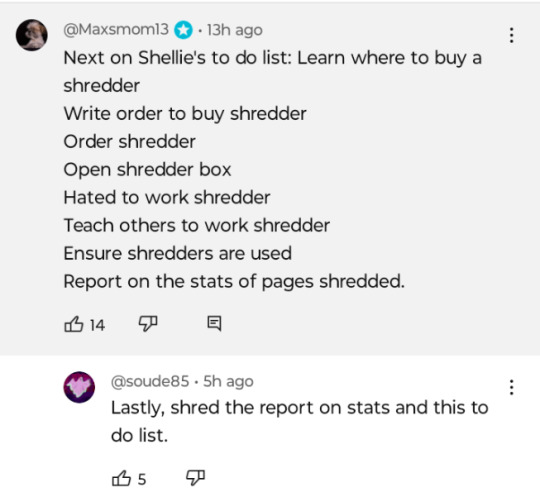

"Farrakhan, who is Black, was born Louis Eugene Walcott on May 11, 1933 in The Bronx, New York City. He is the younger of two sons of Sarah Mae Manning (1900–1988) and Percival Clark, immigrants from the Anglo-Caribbean islands. His mother was born in Saint Kitts, while his father was Jamaican. The couple separated before their second son was born, and Walcott says he never knew his biological father. Walcott was named after Louis Walcott, a man with whom his mother had a relationship after becoming separated from Percival Clark. In a 1996 interview with Henry Louis Gates Jr., Walcott speculated that Percival Clark, "a light-skinned man with straight hair from Jamaica", may have been Jewish."
"Speaking of his father's white Portuguese parents, the Nation of Islam leader said, "I'm going to tell you something. You really want to know what I think? I think they were members of the Jewish community."
He added: "I believe that in my blood, and not in a bad way. Because when I was a little boy I used to love listening to the Jewish cantors in Boston. They had a program, and every week I would listen. I was struck by the cantor, and I've always loved the way they sing or recite the Torah."
Gates, citing an academic source, says Farrakhan's assertion about his lineage is "highly probable" given that nearly all people of Iberian descent in Jamaica and Barbados are of Sephardic Jewish ancestry.
Farrakhan was born in 1933, the son of Mae Clark, who was from Barbados. He was named Gene after his father, a light-skinned man with straight hair from Jamaica. His father, Gates writes, was a philanderer whom the family rarely saw.
"If in my lineage there are Jews, I would hope that in the end, before my life is over, I not only will have rendered a service to my own beloved community of black people but will also have rendered a service to the Jewish community," Farrakhan was quoted as saying..."
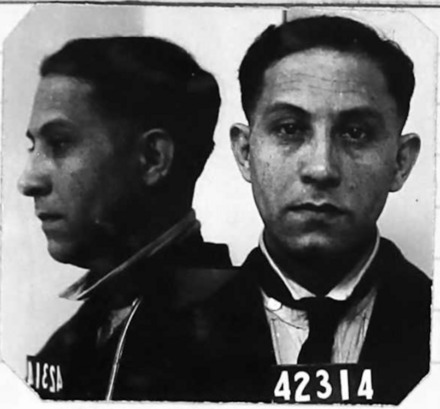
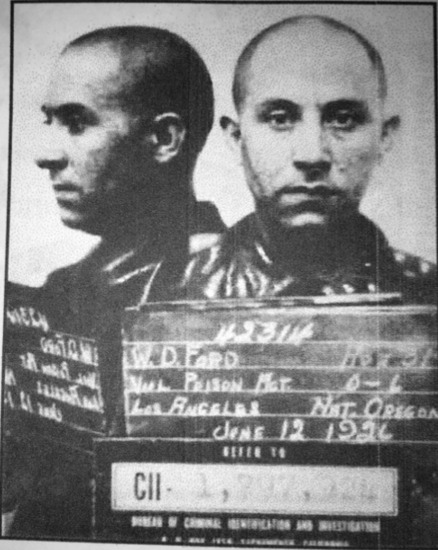
Then there's the founder of the Nation of Islam cult. People still don't know exactly who he was, but one thing is certain: Wallace Fard Muhammad was a prolific con artist.
Theories of origin
Karl Evanzz, in his book The Messenger, postulates that Fard was the son of a Pakistani Muslim, then known as East Indians. He bases this theory on several indications:
Fard spent time at the Ahmadiyya Mosque, a movement prominent in Pakistan and used translations of the Quran from Pakistanis.
The name Fard is a common surname in Pakistan as are other names he bestowed upon his followers such as Shabazz, Ghulam, and Kallatt
Interviews with long-time Nation figures who met him or saw original photos of him such as Ozier Muhammad, Rodnell Collins (nephew of Malcolm X) and Wilfred Little indicate that Fard has Pakistani features
Early teachings from Fard indicated a distrust and disdain for Hinduism
The 2017 book Chameleon: The True Story of W.D. Fard by A. K. Arian studies the origin of the Nation of Islam founder.[129] One theory postulated is that Fard was of Afghan heritage.
The 2019 book Finding W.D. Fard: Unveiling the Identity of the Founder of the Nation of Islam investigates a variety of theories about Fard's ethnic and religious origins, writing: "The people who actually met him, and the scholars who have studied him, have suggested that he was variously an African American, an Arab from Syria, Lebanon, Algeria, Morocco or Saudi Arabia ... a Turk, an Afghan, an Indo-Pakistani ... a Greek ... In an attempt to determine the origins of W.D. Fard, most scholars have relied on his teachings as passed down, and perhaps modified, by Elijah Muhammad. Some have suggested that he was a member of the Moorish Science Temple of America or the Ahmadiyyah Movement. Others have suggested that he was a Druze or a Shiite." Morrow suggests that a background of Ghulat or extremist Shia Islam best fits with what's known of Fard.
Muhammad Abdullah
For decades after Fard's disappearance, Elijah Muhammad maintained that Fard was alive and well. Elijah Muhammad suggested that California Imam Muhammad Abdullah was Fard, though Abdullah himself later retracted this claim. Scholar Fatimah Fanusie has argued that Abdullah was in fact Fard.
Abdullah was reportedly introduced as Fard to boxing legend Muhammad Ali...
#SCIENTOLIGY PROTESR NEWS#MAJOR DOCUMENT LEAK FROM CHICAGO SCIENTOLOGY ORGANIZATION#NATION OF ISLAM CULT JOINS SCIENTOLOGY IN RECRUITMENT#COLUMBIA COLLEGE UNDER THREAT FROM COS SOLICITATIONS#LOUIS FARRAKHAN#JEWISH HERITAGE#SEPHARDIC JEWS#JAMAICA#BARBADOS#ORIGINS OF CHURCH OF ISLAM#WALLACE FARD MUHAMMAD#Muhammad Ali#Malcolm X#Growing Up In Scientology#TrashyV12BMW#SLEUTH OF THE YEAR#Tom Cruise#David Miscavige
0 notes
Text
Trinidad and Tobago: A Fusion of Cultures
The Indo-Trinidadian and Tobagonian community celebrates Diwali as a public holiday, emphasizing their cultural heritage. The celebrations include lighting diyas, cultural dances, and traditional Indian sweets, but it also showcases a unique blend of Indian and Caribbean customs.
For Diwali Pooja items please visit the link, https://vedicvaani.com/catalogsearch/result/?q=Diwali
0 notes
Text
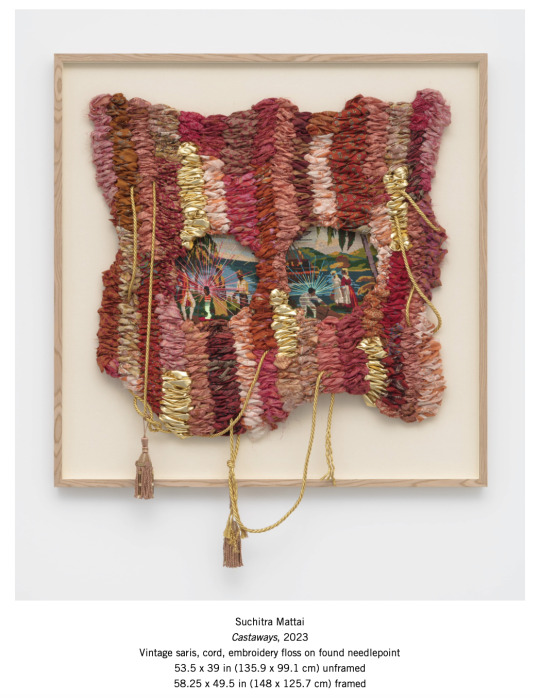
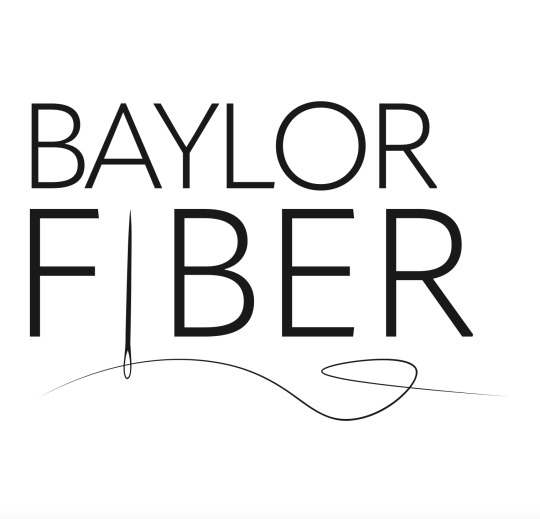
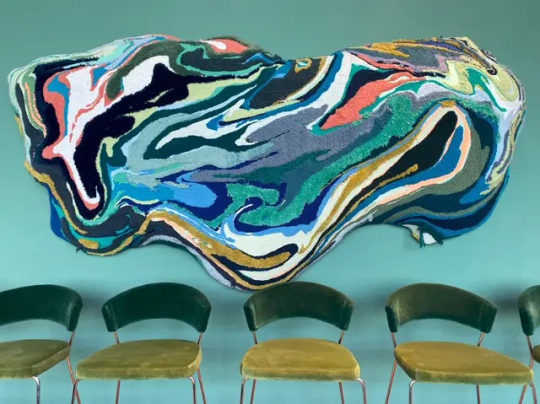
Welcome to Advanced Fabric Surface Design!
This website is devoted to the exploration the world of advanced fabric surface design alongside our in class time together this Fall. You will be introduced to even more processes from the material world of fibers that we didn't cover in our intro fabric surface design course, to continue our exploration on how to create patterns and surface designs on fabric. The techniques we plan to cover this semester include screen printing, batik, marbling, and tufting.
This website will serve as the homebase for this class. Check here regularly for important course information on advanced fabric surface design techniques, processes, and concepts as well as information for all assignments, class announcements, and detailed linkable fiber art resources.
We will examine advanced fabric surface design techniques together in hopes of finding ways that the concepts, materials, and processes of fiber might serve to enhance your own art practice and artistic point of view, wherever you go after this class.
I’m glad you are here!
Images above, from top:
I wish I was in LA to see this new work by artist Suchitra Mattai, a contemporary artist using fiber in her work. She is currently showing a body of work at Roberts Projects in her solo exhibition called “In the Absence of Power, In the Presence of Love”. The top 2 images above are works from the show.
From the exhibition press release:
“The show presents new mixed-media paintings, tapestries, and a soft-sculpture installation that evoke the artist’s Indo-Caribbean heritage. Mattai’s work engages with the subject and form of European pastoral landscapes and figuration as well as Indian miniature paintings. Linking craft-based processes, sumptuous weavings and traditional techniques, the artist portrays resolute brown heroines, replacing heroes and colonizers and reclaiming a patriarchal past.”
our new logo designed by Baylor Graphic Design Spring 2023 graduate Delaney Bullock!!
This is an example of tufting process I've borrowed from this recent article about the process in Architectural Digest...It's so fun! I know you will love trying it out!
0 notes
Video
tumblr
1 note
·
View note
Text

Hello, welcome to my blog! My name is primarily KD, but I also go by Kaciro. I'm an Indo-Caribbean, who is straying from labels rn but I identify as a bisexual. Somewhere, somewhere I'm on the ace spectrum. I'm here and I have sporadic, chaotic interests. I love my dog, that is the first thing you oughta know about me!!! Oh, and sometimes I touch on my culture and roots. Everyone probably knows me for my unhinged, decent posts + incorrect quotes but I'll try to keep this more generalized. but you def will catch me straying into specific fandoms (like Disney). 💫 Pronouns: She/Them but Fae/Faer will do too. 🍄 My Carrd (finally!!!) 🍁 I have tons of things that I’m associated with as a multifandom lover. I have improved this blog from before/can interact better, so I'm proud of that. ALSO, Send me asks for fun lmao
(Btw I love the color blue💕💕, if you can, ask why)
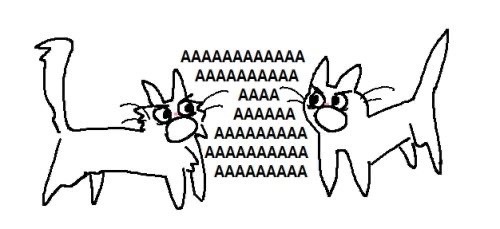
🚶🏽♀️👈Get thee gone from my gate, thou jail-crow of Mandos if you are a (DNI List):
Dream stan
Boyfriends stan
Homophobe, transphobe, biphobe, panphobe, aphobe, or lesbophobe (or queerphobe in general!!)
A terf
Truscum/transmed
Racist
Pro-endosystem
Pedo/MAP
Xenophobe/don't support xenogenders and neopronouns
Anti-religious/have prejudice against any religions
Pro-religion/obsessed with it
Sexist (misogynist/support misandry)
Ableist
⚡️Fandoms⚡️:
FNAF (yes, the entire franchise)
Bendy & the Ink Machine (my childhood!)
Incorrect quotes (is that a fandom? idk)
Classical and modern literature
TF2 (im a gaymer)
Mandela Catalogue
The fandom of "Liking fictional and irl people (Con O’Neill, Henry Cavill, and Peter Steele)" (not really romantic)
PoTO
MXTX/Danmei
Baki the Grappler
Ancient Greek Mythology
TSOA
AHKJ/Madagascar
Horseland
Bluey
PJO
Nimona
Warriors (Erin Hunter)
HTF
LotR (Tolkien's writing in general actually)
OFMD (out of that era but relevant?)?
Aesthetics/Stimboards
Dnd/Fantasy
JJBA (part 3)
MTV Downtown
Hatfield & McCoys
Encanto (2021)
Bollywood (my heritage, bby)
Fanfiction (mine mostly)
Dead Dove fics/very angsty fics
Memes
Disorganization of Shrek!! (he is love he is life, he is everything)
Some opinions
Mostly shitposting and reblogging
Rambling

✨Occasional fandoms that are not a main focus✨:
Paleontology
AoT
Courage the Cowardly Dog
TWD
WoF (Tui Sutherland's works)
Avatar: the Last Airbender
Avatar (James Cameron)
DHMIS
TMA
Marvel & DC
Winx Club
King of the Hill
Clone High
Rivals of Aether (Lovers of Aether)
MLP
Miraculous Ladybug
Xenofiction (Ice Age, The Lion King 1994-ish stuff)
Genshin Impact
Writing (my own writing, sometimes horribly-made smut)
Sally Face
Animals (dogs specifically)
Star Wars
South Park
WwdiD
DoaWK
Rick and Morty
Lemon Demon
Vivziepop’s series (sometimes, i used to be huge fan)
Tokyo Revengers (eh)
Always Sunny in Philadelphia
House of Wax/Slashers
Night in the Woods
Bojack Horseman
Monster Prom
���Who I would simp for (if I can admit) :
Lan WangJi from Mo Dao Zu Shi
Sauron from Tolkien's Works
Asterius from Hades (2018)
Izzy Hands from Our Flag Means Death
Red Guy from Don't Hug Me I'm Scared
Zeke Yeager from Attack on Titan
Gabriel from The Mandela Catalogue
Kakyoin Noriaki from Jojo's Bizarre Adventures: Stardust Crusaders
Kaeya Alberich from Genshin Impact
Lisa from Genshin Impact
Glamrock Foxy from Five Nights at Freddy's: SB
Godrick the Grafted from Elden Ring
Death from Puss in Boots: The Last Wish
Miguel O'Hara (Spider-man)
🍪Comfort Characters:
Simba from the Lion King
Ballister Boldheart from Nimona
Mort Mordecai from Madagascar
Bonnie from Five Nights at Freddy's
ahhh, this is crigne but know that LWJ 🐰 and Sauron 🌋 came before any other of my blorbos lol. i do write time to time, so read those snippets on my ao3! now enjoy yourself, running thru my blog! enjoy this bullshitery and have a good day!
Also, new and better ao3 account with my Hae~ and pinterest and twitter 🌸
Update: keeping to myself to finish fanfic projects I’ve started. I've been simping real hard for a stoner, so I may be a furry... sorry not sorry about liking the freaky bastard Godrick tho. also getting back into reading and picked up danmei. Good luck to me.
#intro post#blog intro#frivolity fricking frack#lolololol#hehe :3#this is my contribution#i have a lot of rewatching to do for my fanfucs#help lol#i dont consume the media#not the official version mostly#ummm anyways#i also like the cure#and msi#masterpost#sapphic pride#revising this every time
10 notes
·
View notes